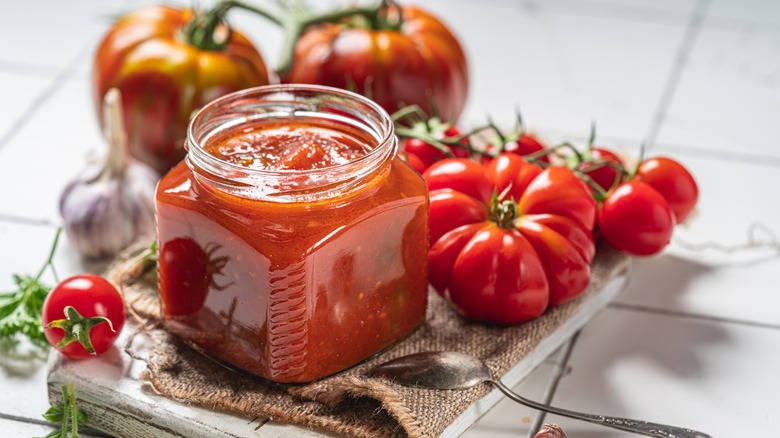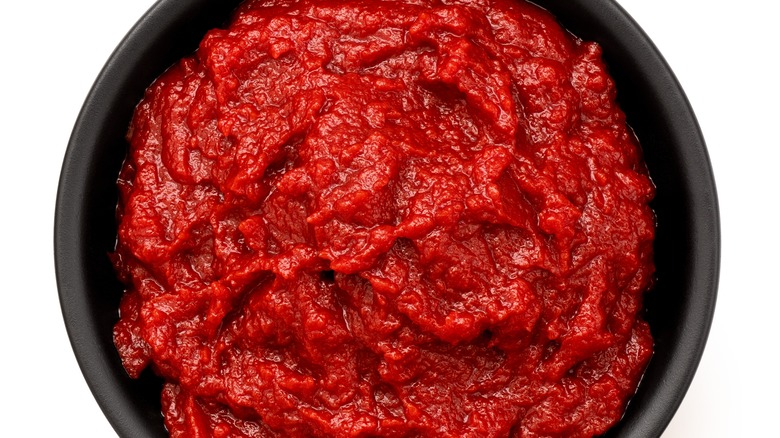When To Use Tomato Paste Vs. Tomato Puree
Sometimes you want all of the flavor and color of tomatoes without all the hassle of having to actually pick some out, wash them, cut them up, and reduce them down. You're a busy person; you don't have time for all that. Thankfully you can choose between tomato puree or tomato paste, but which to choose?
According to My Recipes, tomato puree is created by lightly cooking some tomatoes and then (who would have guessed) pureeing them into a thick broth-like consistency. Tomato puree tastes quite a ways milder than its pasty counterpart and is closer in flavor to a fresh tomato with a slightly more acidic and more subdued taste. Tomato paste is created by cooking tomatoes slowly for very long periods of time, straining to remove skins and seeds, and cooking for as long as possible to really concentrate the flavors. The consistency is far thicker than the puree, and the taste is sweeter as well. The rich flavors of the tomato paste are more concentrated and, therefore, significantly more intense than in the tomato puree.
When and how to use what?
Because these two products are so different, typically, they are used for different things and are usually not interchangeable, per Masterclass. Tomato paste is more often used when you want a thickening agent for sauces, soups, stews, or in a ground meat dish. Tomato puree, which is available in cans or can even be made at home, is found in recipes that require a fresher tomato taste, like pizza sauces or dips like salsa and is often used as a base.
While they are different, there are tons of times when they're used together, and with some tinkering, you can also substitute one for the other. According to Masterclass, mixing equal parts water and tomato paste will create a suitable tomato puree. They also recommend using tomato puree in a 3:1 ratio to the paste to substitute. If a recipe calls for x amount of tomato paste, you can use three times that amount of puree and cook it down to get the same effect.

